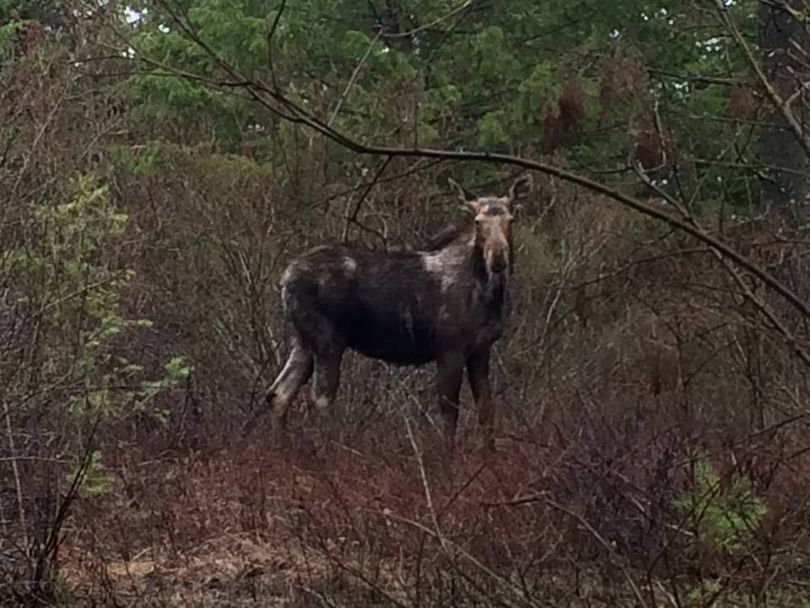Tick infestation can make moose look ghostly gray

WILDLIFE WATCHING --
They look old, with graying hair, but age isn’t a factor.
The so-called “ghost” moose wandering around the region are likely infested with ticks.
“Moose can experience tick infestations that start in mid-September but the problem is not clearly visible to people until late in the following winter,” says Phil Cooper, Idaho Fish and Game Department educator in Coeur d’Alene.
The culprits are called moose ticks or winter ticks.
The infestations become visible when moose scratch, paw or rub the irritated area enough to cause large patches of hair to break or fall out and expose their light-colored skin.
“That is when IDFG begins to get reports of sick-looking moose,” he said.
In late summer or fall, when a moose contacts brushy vegetation covered by interlocked tick larvae, strings of thousands of the tiny ticks in the making cling onto the hair of the moose and crawl toward the skin.
“These tick larvae can also cling to deer, however, deer appear to be able to scratch them off,” Cooper said.
“Infested moose average 33,000 ticks, and one dead moose was documented to have more than 100,000 ticks,” he said.
The female ticks feast on the blood of their host in through winter and drop off sometime in April to lay their eggs on the ground.
Female ticks that drop off a moose and onto snow generally do not survive. “When moose ticks fall onto bare ground, their survival rate and reproduction is much higher,” he said.
“Therefore, heavy or late winters reduce tick infestations the following fall-winter. Mild winters where most or all of the snow is gone by April lead to higher infestations later that year.”
While some moose survive until the feeding ticks fall off and subsequently recover, some moose die from factors such as loss of blood, hypothermia because of hair loss, or issues related to poor nourishment when the severe itching causes them to forage less than necessary.
“Mortality is highest in calf moose,” Cooper said. “Their smaller body mass loses heat more readily. It has been estimated that calves can potentially lose half of their blood to the attached ticks.”
Ticks are generally absent from moose by late May to September.
People are spared the scourge of moose ticks, which will not attach to a human, Cooper assured.
However, a moose infested with moose ticks can become so irritable and agitated that the animal can become notably aggressive toward people or dogs.
